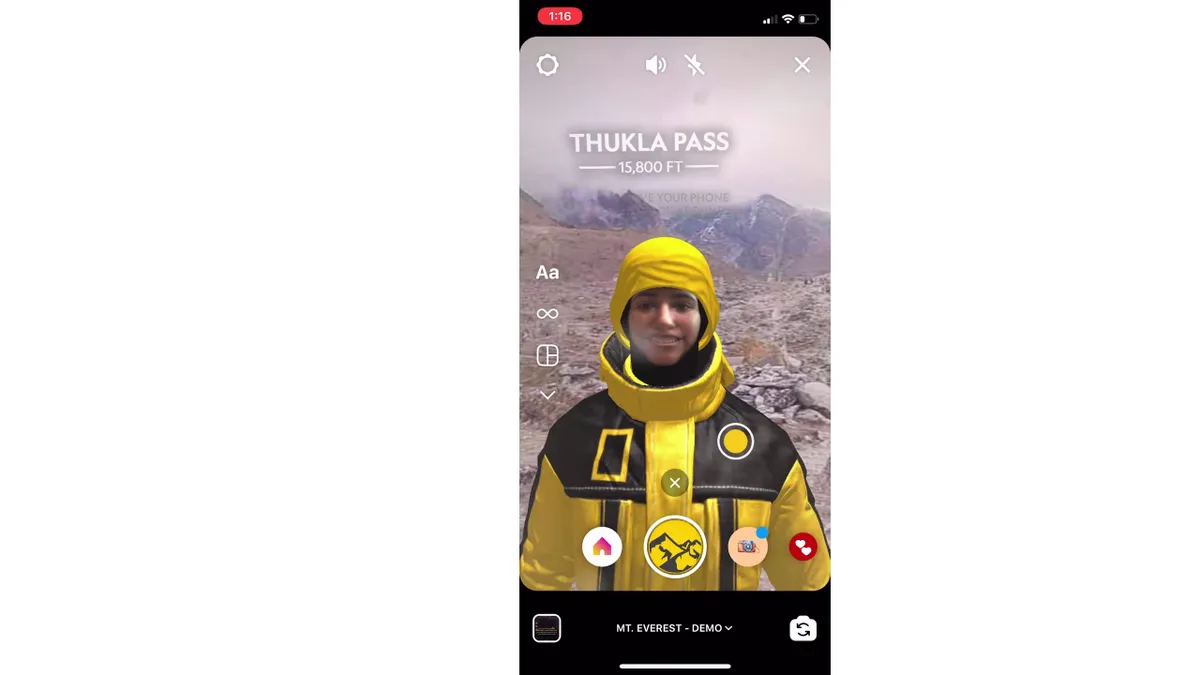Brief:
- National Geographic is letting Instagram users immerse themselves in an expedition to the top of the world's tallest mountain with an augmented reality (AR) experience. Users of the photo-sharing app can virtually dress as climbers and travel up Mt. Everest as an extension to last year's National Geographic and Rolex Perpetual Planet Everest Expedition, per a blog post.
- Opening the AR experience on Instagram transports viewers to an area near the base of the mountain at an altitude of 15,800 feet. Users can see a 360-degree view by moving around their smartphones or swiping the screen. Viewers can see their breath by opening their mouths, and tap on a yellow dot to see a map of Mt. Everest that shows other areas to explore.
- At the summit, Instagram users can flip the camera view to see a 360-degree panorama. The virtual expedition also lets people take selfies and videos in their climbing gear to share on social media. To find the AR content, Instagram users need to open the Instagram camera, tap the globe icon and search for "Everest Climb," per the blog post.
Insight:
National Geographic aims to engage Instagram users with its July issue that features details from the Mt. Everest expedition it co-sponsored last year to install high-altitude weather stations. The content is more immersive and interactive than the static images and text from the print magazine, and could help the organization connect with a younger generation who are heavy users of social media. Instagram is forecast to boost U.S. usage 14% this year to an average of 30 minutes a day as more consumers use social media to stay connected during the coronavirus pandemic, per researcher eMarketer. That increased usage time gives National Geographic a chance to engage Instagram's audience with an exclusive AR experience.
The virtual Everest expedition marks the second time in the past few months that National Geographic has created immersive content with the Spark AR platform developed by Instagram's parent company Facebook. In April, the publisher unveiled an AR version of its magazine to observe Earth Day. The AR experience let Instagram users walk around a 3D globe seen through their smartphone cameras and learn more about climate change.
National Geographic is among the media companies that have developed immersive content to connect with tech-savvy younger audiences. The New York Times Magazine in March created digital content for its annual music issue that included interactive print ads readers could activate with a smartphone camera. USA Today also has developed several AR experiences to enhance its storytelling with digital imagery. As younger consumers seek experiences they can share on social media, publishers and brands can extend the reach of these efforts and form stronger bonds with target audiences.












